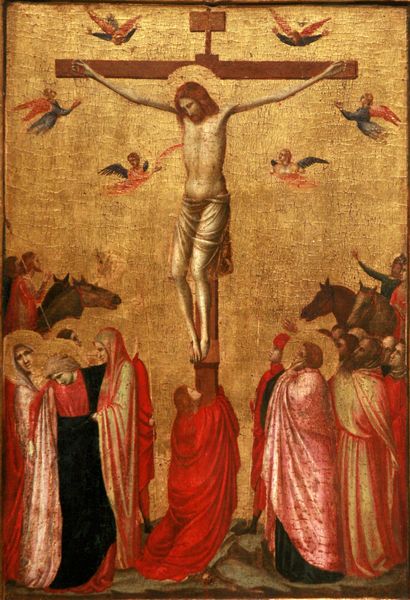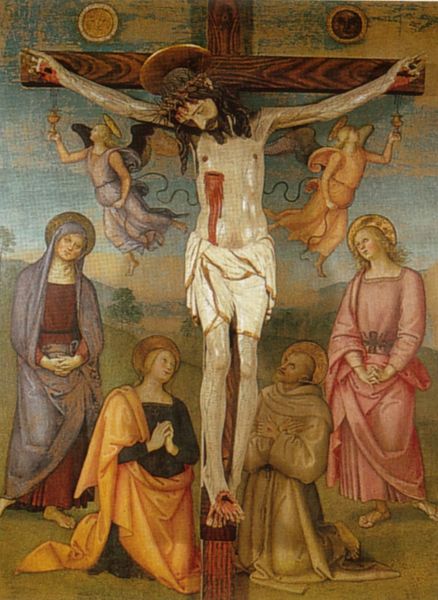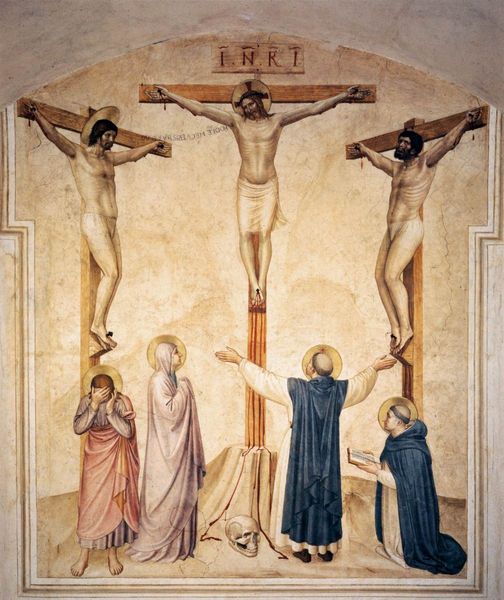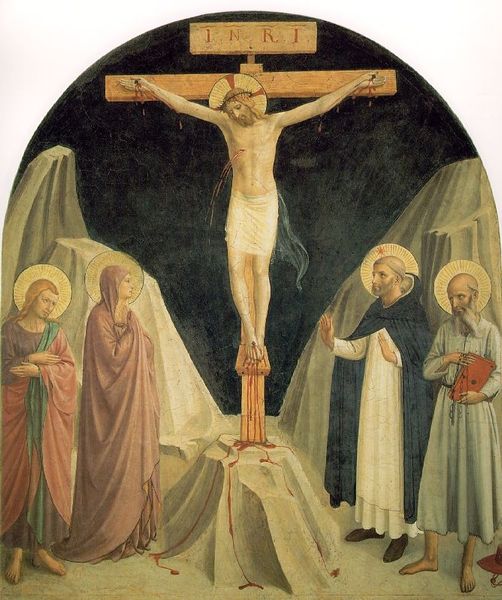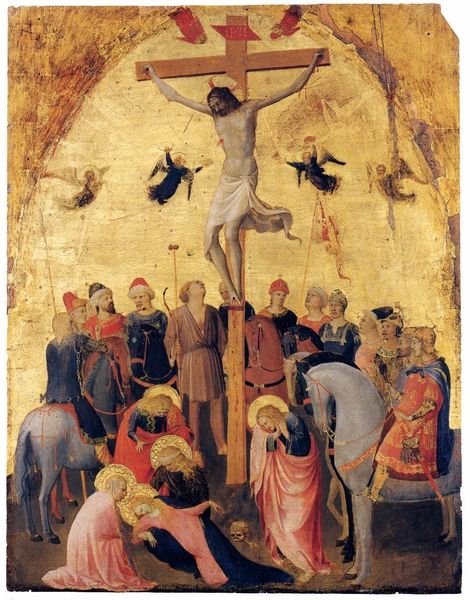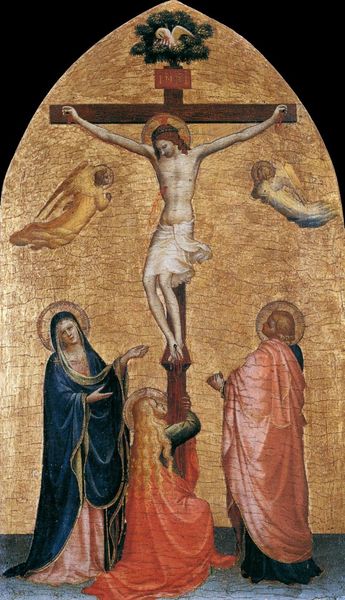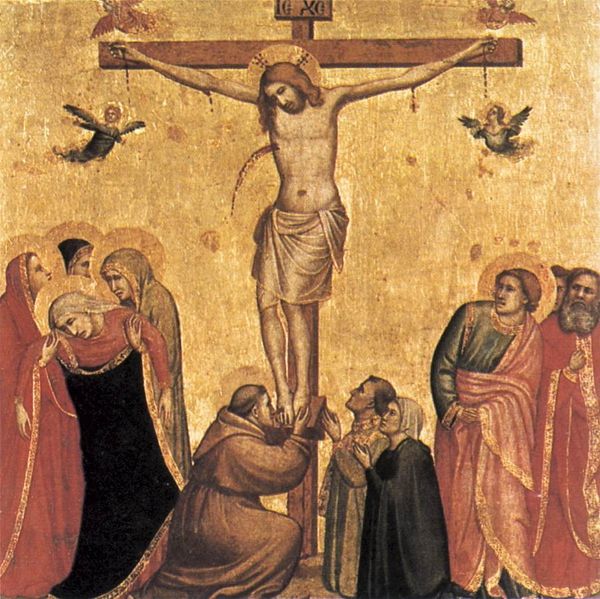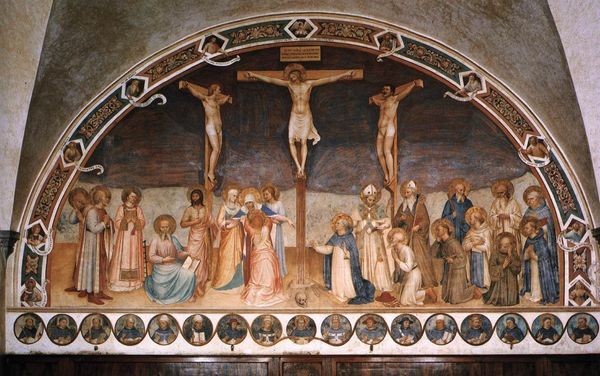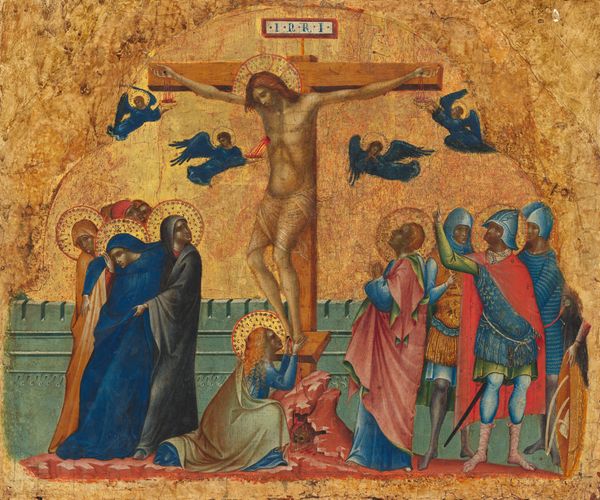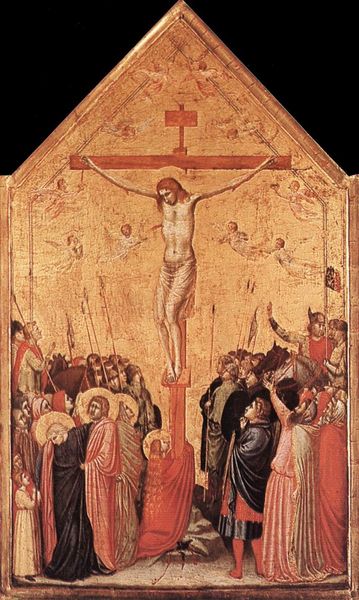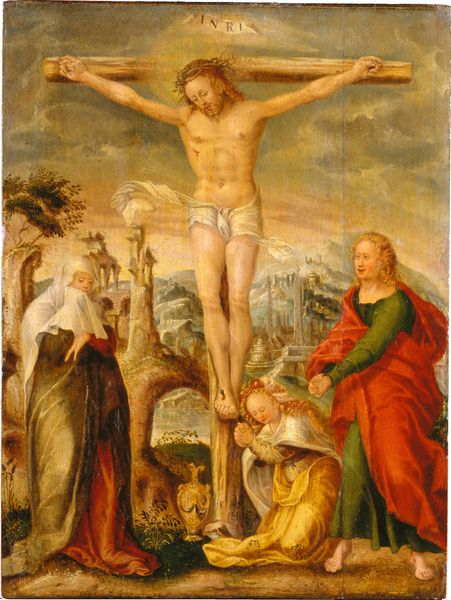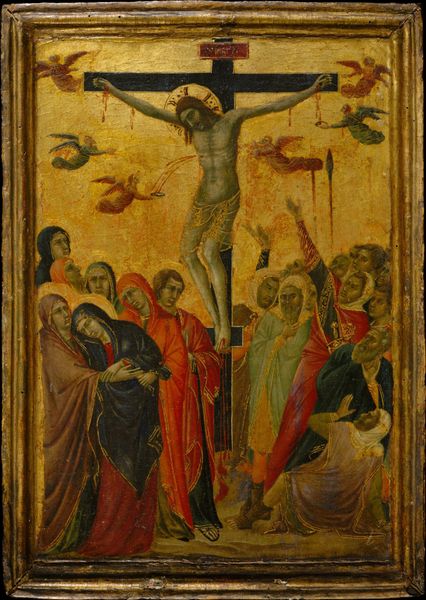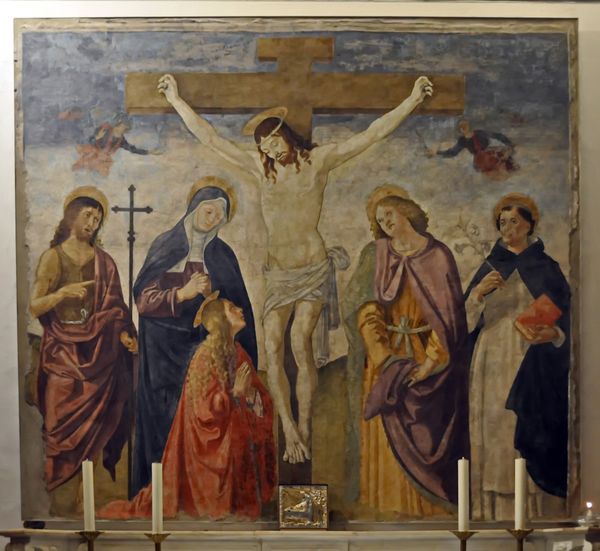
painting, fresco
#
portrait
#
medieval
#
narrative-art
#
painting
#
figuration
#
fresco
#
oil painting
#
christianity
#
crucifixion
#
history-painting
#
italian-renaissance
#
christ
Copyright: Public domain
Curator: Before us hangs Giotto's "The Crucifixion," a fresco dating back to around 1320. It resides within the Basilica of Saint Francis of Assisi. Editor: My initial impression is one of profound sorrow, but also a strange sense of restrained dignity. The composition, while densely populated, directs my eye immediately to Christ’s body against that implacable, almost gothic blue. Curator: That blue, known as ultramarine, would have been incredibly expensive, signalling the Church’s immense wealth and its importance in 14th-century Italian society. Note how the artist positions figures on either side of the cross as they express distinctly human grief, inviting emotional engagement from the viewer. Editor: The hovering angels are striking. Their expressions vary from quiet sadness to near hysteria, some even catching Christ's blood in goblets. The chalice, especially, evokes potent Eucharistic symbolism – sacrifice and redemption visually intertwined. Do you feel their variety serves a purpose? Curator: Absolutely. In a society with limited literacy, images had immense pedagogical power. Giotto creates accessible theology through a spectacle of grief. By showing the angels actively participating, witnessing and collecting the blood of Christ, he emphasizes the visceral reality of the event. Consider this fresco's function, designed for both devotional contemplation and conveying theological narrative within the Basilica's architecture. Editor: And what of the figures at the foot of the cross? Each halo is individually rendered and seems to highlight various responses. This personal touch conveys both unity of faith, but each grieves distinctly, underscoring individual response to the sacrifice of Christ, which continues to resound today. Curator: It’s worth reflecting on how such accessible figuration signaled a departure from more stylized Byzantine iconography, contributing significantly to the development of Renaissance painting and to the democratization of religious imagery. Editor: Democratization in art as in politics is never quite simple, however. Nonetheless, studying Giotto and this Crucifixion always prompts one to remember how art shapes culture while providing insights into culture through historical symbolism. Curator: Yes. The Crucifixion captures a turning point. Its enduring influence lies both in its artistic innovation and its complex representation of suffering, faith, and power.
Comments
No comments
Be the first to comment and join the conversation on the ultimate creative platform.
